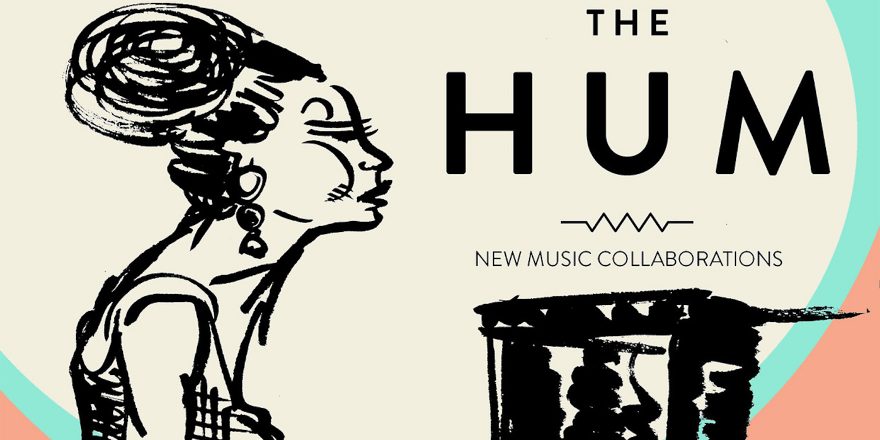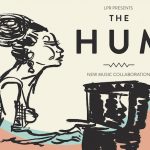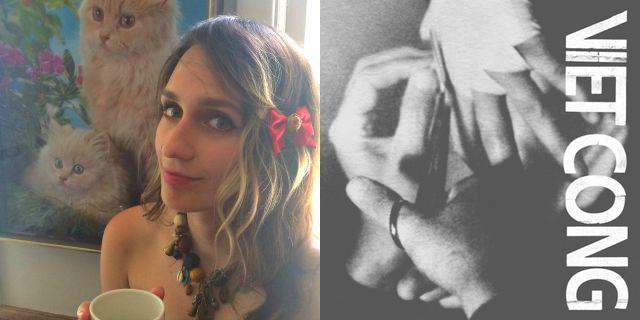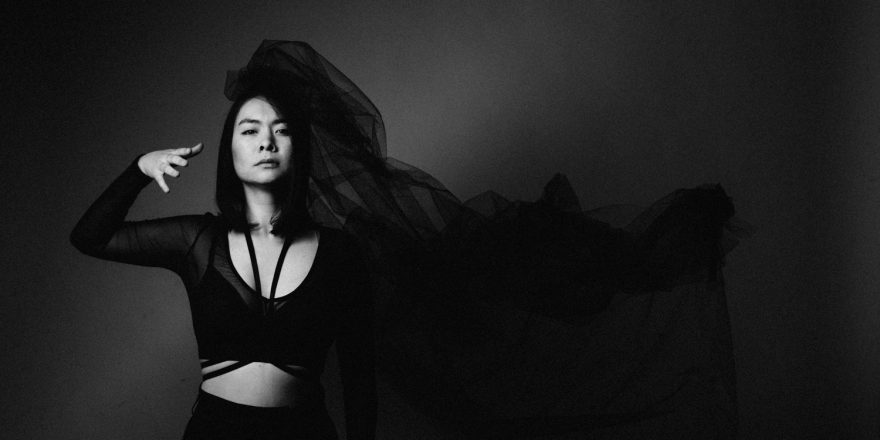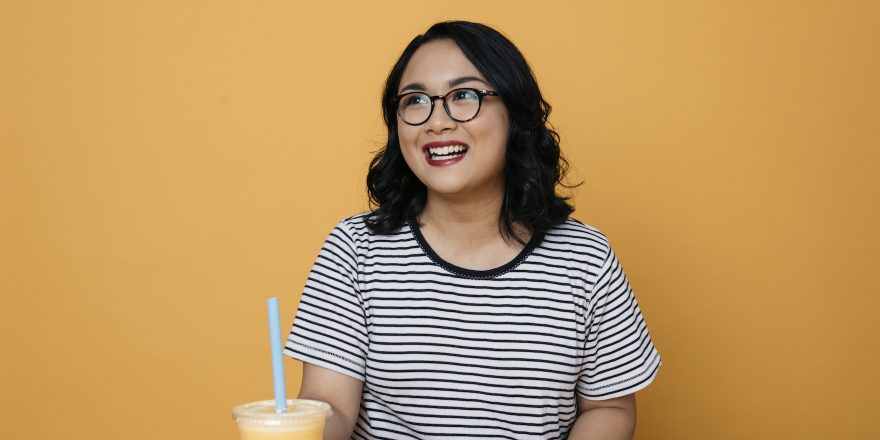The Hum is a series of concerts where over 60 female-identifying musicians are teamed up by Rachael Pazdan, the music director of New York City venue Le Poisson Rouge, for one-off collaborative sets. Its fifth run is about to begin, and The Hum’s pairings and groups include Deradoorian, The Blow, Eartheater, members of Speedy Ortiz, Cibo Matto, Au Revoir Simone, Hurray for the Riff Raff, and many more talented artists.
To celebrate the series, which kicks off May 1 at Good Room and will continue there throughout the month before a closing show at Le Poisson Rouge on May 25, Talkhouse Music asked some of The Hum’s current roster to comment on the work of the musicians they’ll be playing with for the series, and paired the acts in a playlist to accompany their points of view. If you’re excited by this sneak preview of the series, find more information about The Hum’s dates and tickets right here!
1. Opal Hoyt (Zenizen) on Dara Hirsch (Operator Music Band)
OPAL HOYT: I met Dara [Hirsch, Operator Music Band’s guitarist and singer] when she was playing in Journalism and I was in a band called Napoleon. I think we’ve both moved on to do stuff that represents us much better, so I’m so glad to be talking about Operator Music Band. I’m a sucker for “EE Unsh”, “Zed Logic,” and “Wobbulator,” my favorites from Puzzlephonics I & II. The vocals switch around a lot, from a heavy drawl, to the ethereal “feminine” vocal, to the in-your-face/matter-of-fact chatter. Get you a singer who can do it all, amirite?
Honestly, whether it’s blasé or driving or wonking, all the band’s musical parts talk to one another, which makes me imagine the best storylines. In “I, Banana,” for example, I’m convinced someone is walking down the street, really jiving, and gets interrupted by a passerby (the alto synth that comes in). They argue a little back and forth for a bit, and the vocals and guitars come in as this person’s internal monologue is like, What am I doing, why are we arguing?, and he kind of tunes the other guy out and floats on down the road, back into his own jams. All of the songs have that quality about them, which is great for a daytime zone-out. Favorite lyric: “I am the sea / I am a slow ocean spreading the contaminants of populations past and present to other oceans.”
2. Sally Decker (Multa Nox) on Faith Harding (Novelty Daughter)
SALLY DECKER: I love the confessional, vulnerable quality to the lyrics and melodies in Faith [Harding, of Novelty Daughter’s] music. This track was my first encounter with it. The way her voice slides around this melody gives me chills, and the sentiment does, too: “I think about you when I wanna feel sad, I do…” It feels like we’re getting a peek into this new understanding she’s having while she’s alone in her room or something—it’s a secret at first, and it becomes more and more self-assured each time it’s repeated. The way she reaches for notes and then falls away from them feels slippery, like she’s just on the verge of committing to their fullness.
When she slides up to the high notes at the end, there’s a moment of release that makes me think of screaming involuntarily in my apartment when no one else is home, or the moment of finally figuring out the complex set of impulses combining to make you feel the way you are feeling—knowing it all at once, in one long exhale.
3. Sadie Dupuis (Speedy Ortiz, Sad13) on Macie Stewart and Sima Cunningham (OHMME)
SADIE DUPUIS: OHMME’s arrangements seem, on first listen, to tiptoe as they build, but by the time their songs are over, you realize they’ve sprinted miles. On “Woman,” guitar work breaks from contained plucks into sprawling, hard-panned feedback; vocals stretch 1920s cabaret-style harmonizing into Björk-indebted howling. I can think of a few other masterminds who do this kind of songwriting well—Annie Clark, Thao Nguyen and PJ Harvey all spring to mind, both for their phrasing and for their tendencies to pack compositions with layers of incongruous sounds and production tricks. The stuttered vocal hook that reprises throughout “Fingerprints” has no business tying together garage rock and somber strings as well as it does. Yet it’s exactly the right gesture.
What’s most remarkable is that there are two songwriters concocting these wild tracks. [OHMME’s] Macie Stewart and Sima Cunningham have a special kind of musical rapport, and listening to them converse across their songs is a lucky experience—particularly on the proggy, theatrical “Furniture,” in which the two players obviously delight in building up and breaking apart the grooves they create in tandem.
4. Drew Citron (Beverly) on Gabriela Jimeno (Ela Minus)
DREW CITRON: I wasn’t familiar with Gabriela [Jimeno, of Ela Minus’s] music before being asked to collaborate for The Hum, and, lucky for me, I’ve just spent the weekend bingeing her last EP, Grow. Needless to say, she’s rad. I’m struck by her use of space, her restraint, and the deliberateness of her choices. Even the artwork spanning across albums is succinct: geometric colors are sweetly enclosed in their digital boxes. Her masterful synth productions lure you somewhere with a nice breeze, probably tropical. She’s super smart, and she’s on to something.
On “A.R.P.,” Gabriela uses every arpeggiated note, every loop, and every sample as percussion. There’s not a huge difference between the rhythm section and the lead. As a natural four-piece rock–leaning producer and writer myself, this is such a good reminder: I usually chug around on a chord progression and make the vocals soar as much as possible, but Gabriela resists this; it’s more of a non-linear experience. There’s a lot going on, but not too much. She proves that anything can and should be used as percussion and as bass, and that the more you play around the beat with different elements, the more exciting the build of the song will be. She’s constantly mixing in slightly different drum sounds and synth lines—things you can’t notice upon first listen, but that you feel inherently. I love her use of effects on the chorus of the song: The beat doesn’t necessarily “drop,” it expands outward, her voice carried wider by circles of reverb and increasingly talkative synth bites, like a wave rolling to shore. I can’t wait to hang out and play music with her.
5. Julia Easterlin (Hite) on Arooj Aftab
JULIA EASTERLIN: Ever since meeting Arooj in college and hearing her sing for the first time, I’ve been struck over and over again by her natural ability to shoot me right between the eyeballs with her voice and the deeply personal connection to what the fuck she’s doing. She completely immerses me in a soundscape of her own design with her compositions, and I feel that so intensely when listening to “Aey Na Balam.”
No bullshit. All purple and black and earthy. Realizing that Arooj’s voice feels very intimate despite the use of reverb??? Amazing! I always shy away from reverb because I want my voice to be right in people’s eardrums like I’m next to them…but in creating space in this mix using reverb, her vocals still feel direct and intimate. So warm. So honest-feeling.
I’m also amazed by how connected her vocal lines are. Each note carries over into the other. No choppy bullshit runs. Long expressive lines, like a string instrument. Like no string instrument can imitate. Human voice, when it’s well-loved, gets me at my core.
The pacing of the first section of this song creates a sense of very clear intention. There’s just no bullshit here. Just none. Lots of Earth. Lots of clarity. Lots of warmth. She’s so fucking relaxed in her vocal delivery. Not a hint of tension in her jaw/tongue/teeth. Amazing. So hard to do. #singergoals



